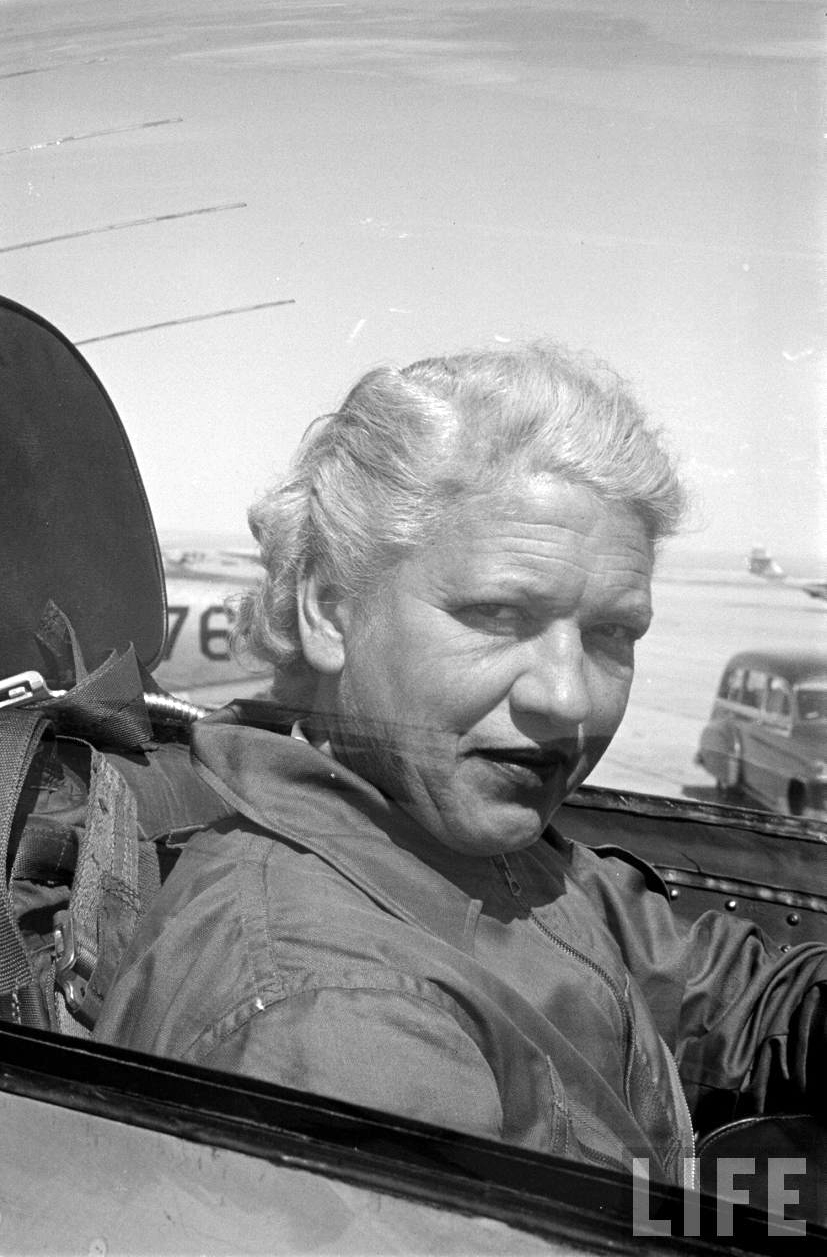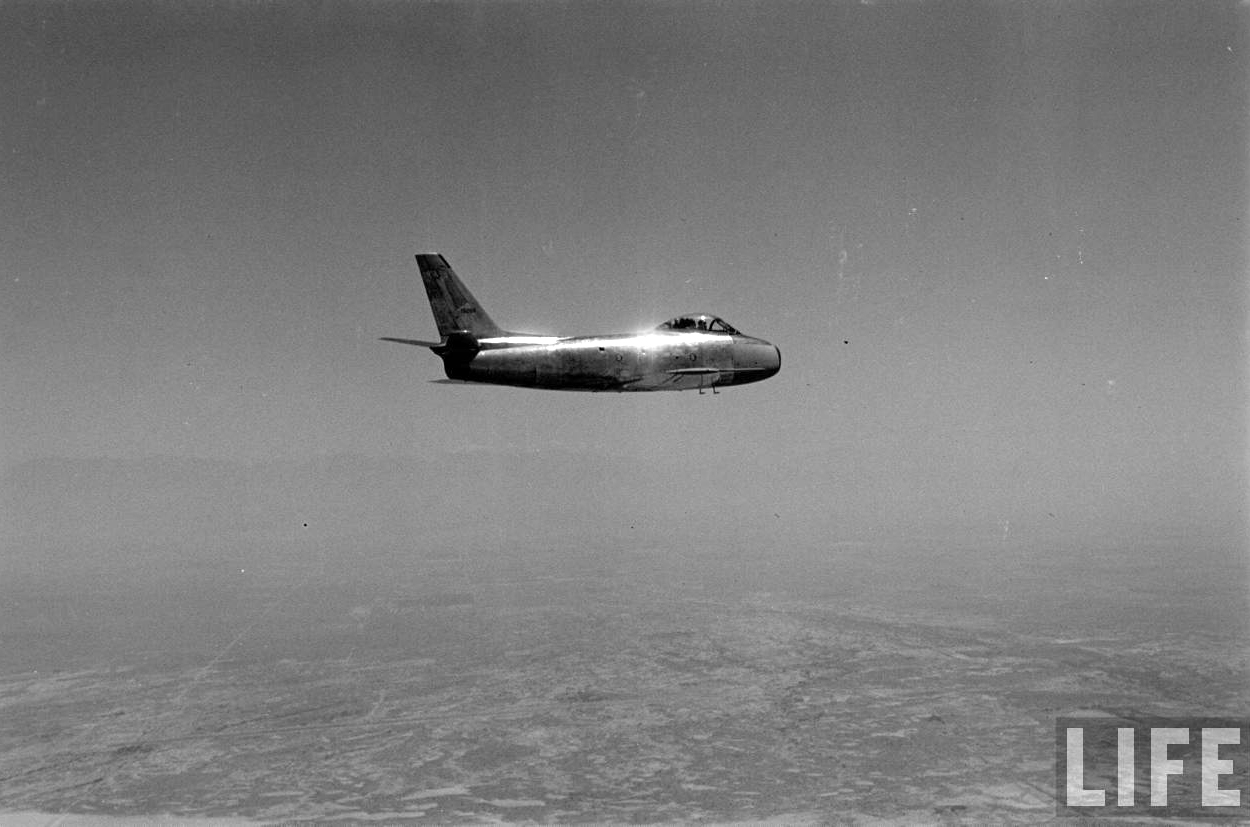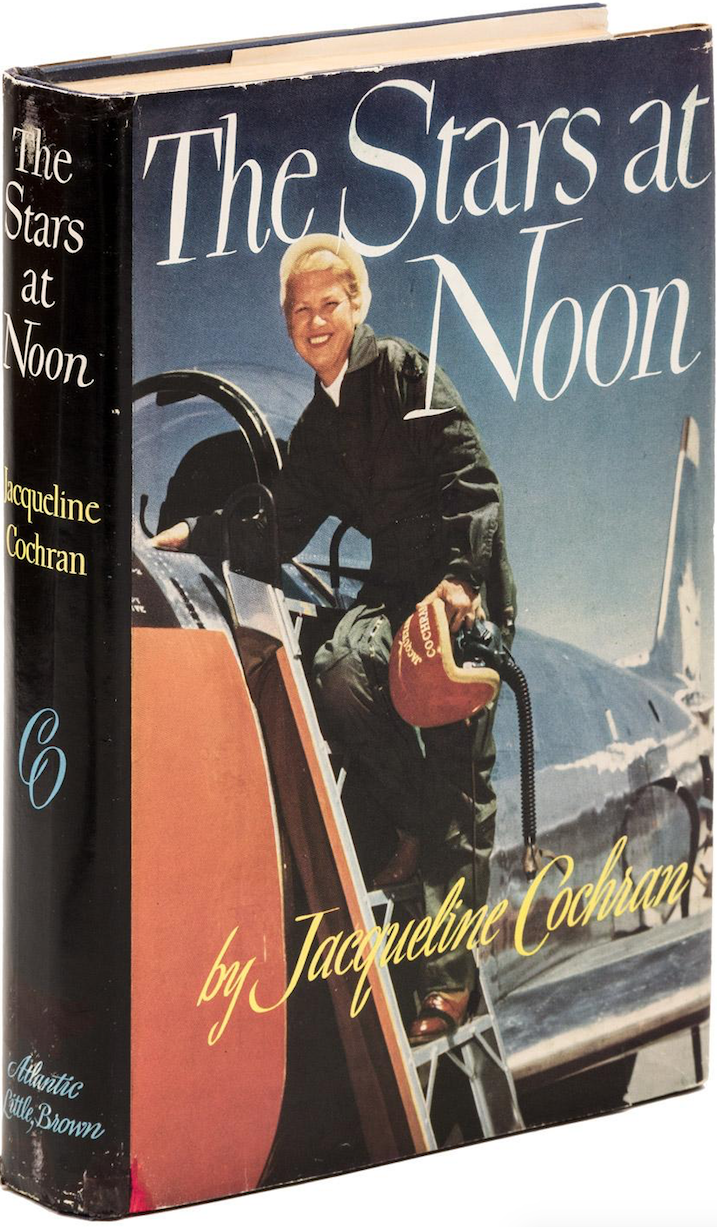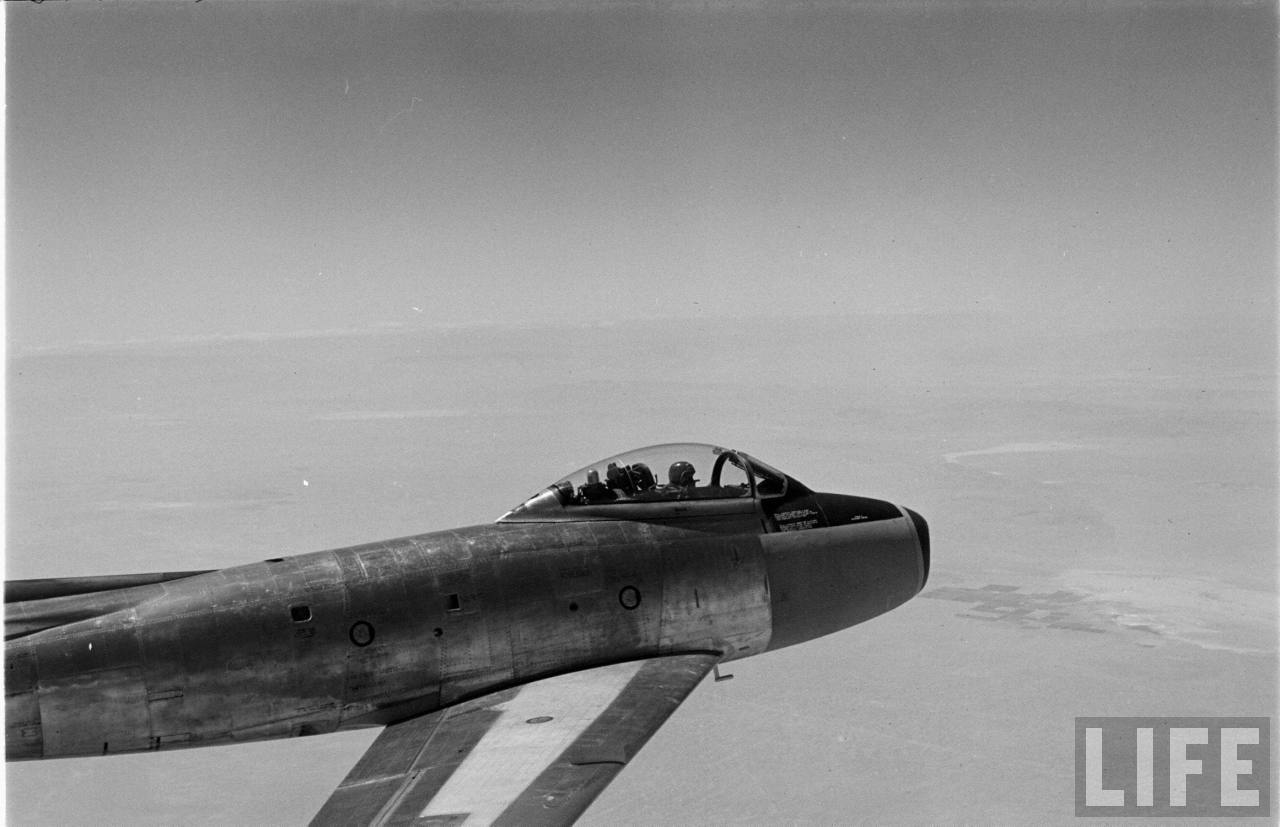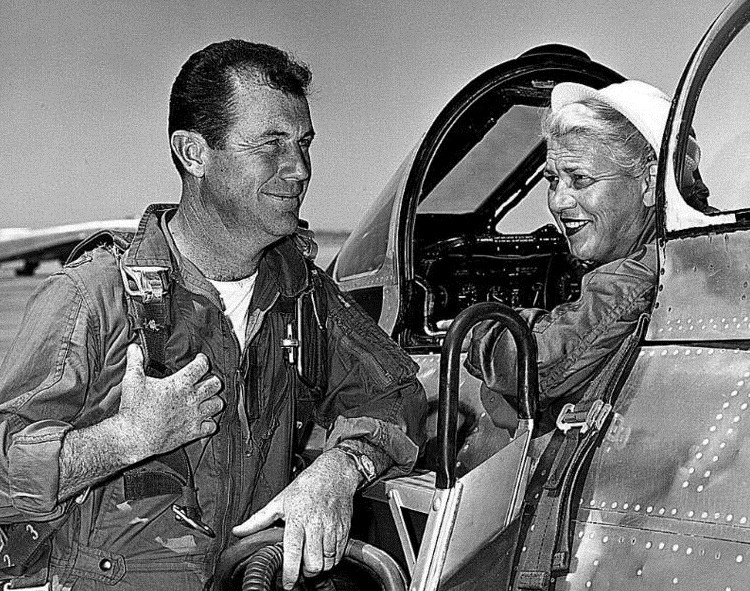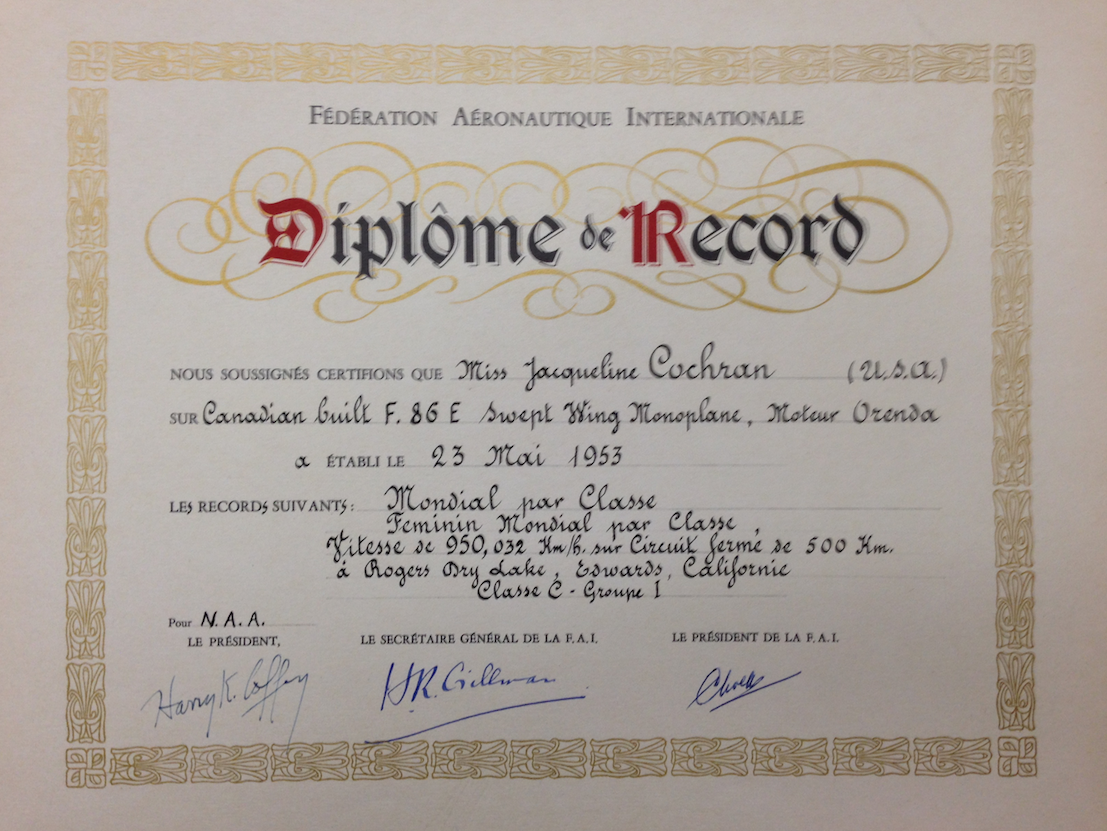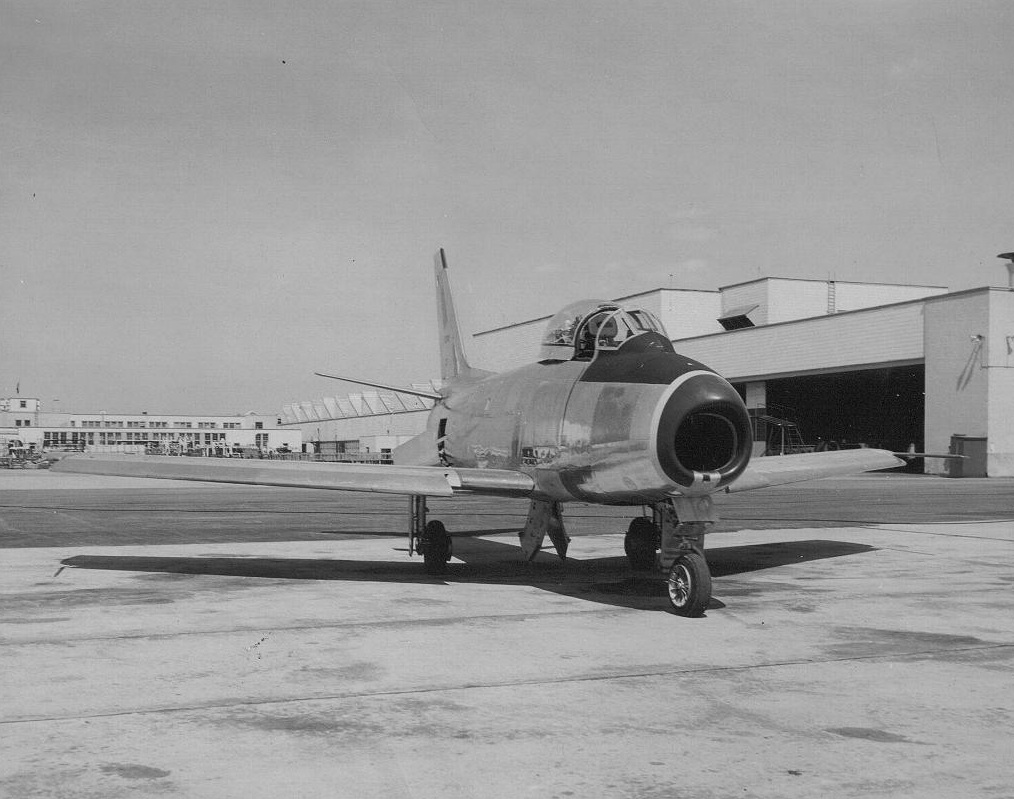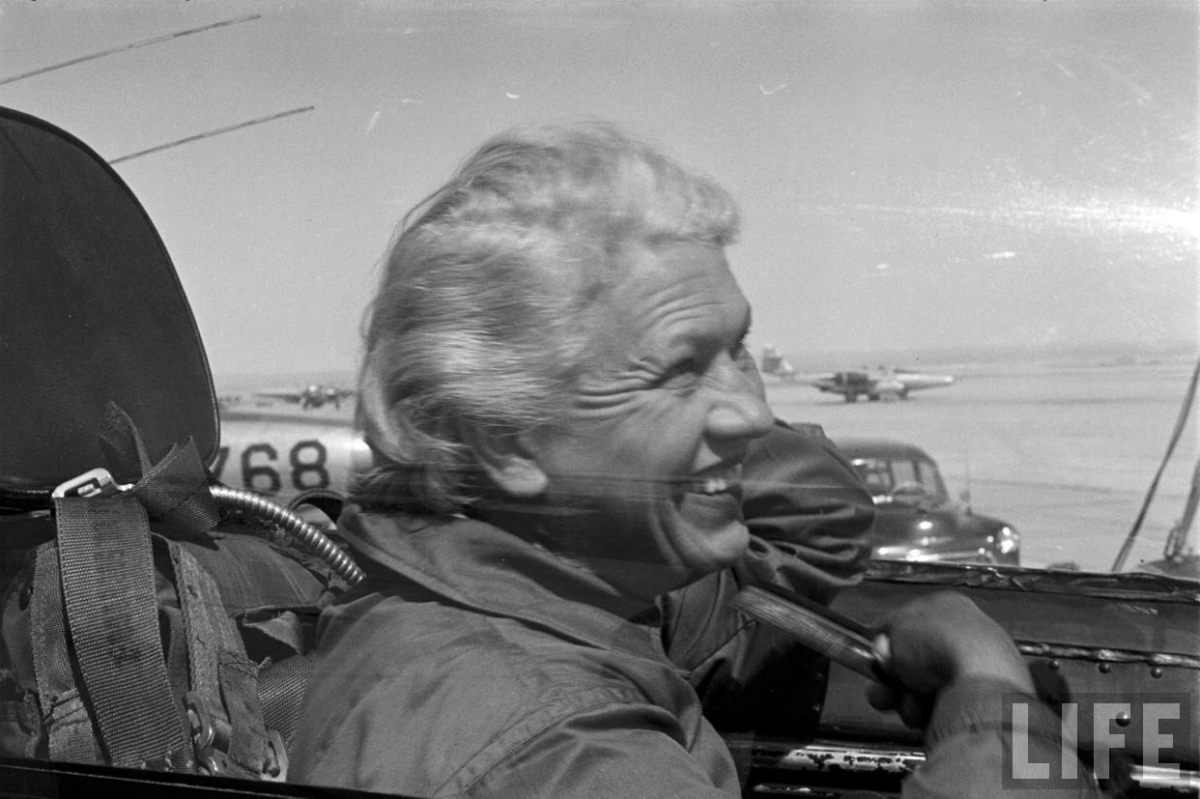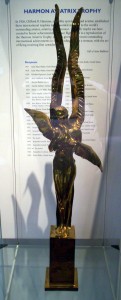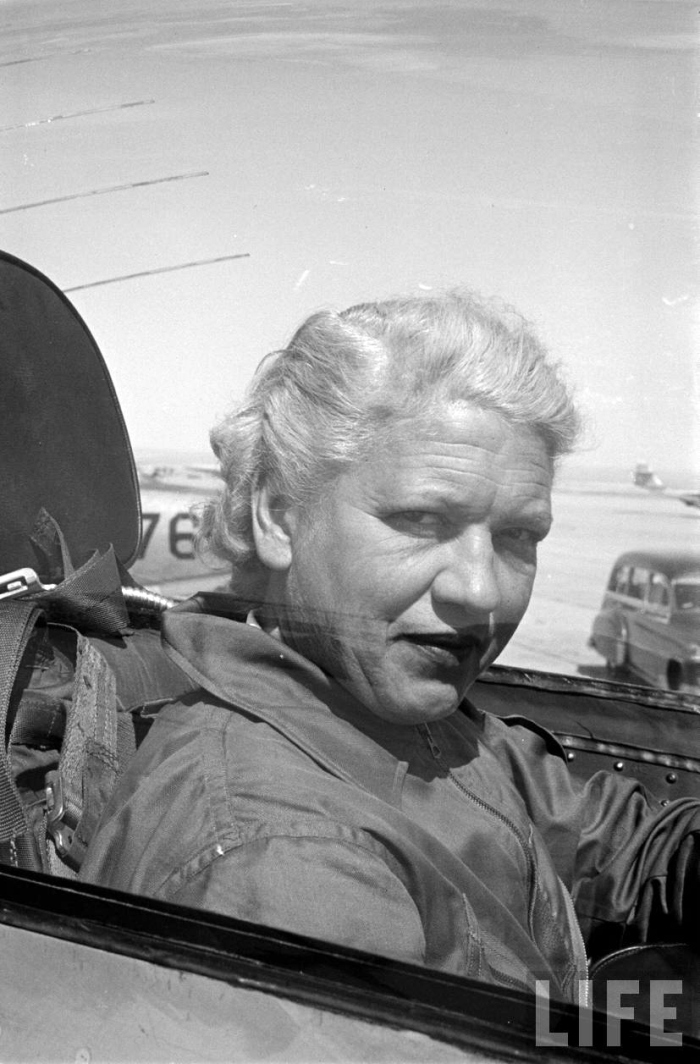
 3 June 1953: Concluding a series of speed and altitude records, Jackie Cochran set a Fédération Aéronautique Internationale (FAI) World Record for Speed Over a 15/25 Kilometer Straight Course with an average speed of 1,067.68 kilometers per hour (663.43 miles per hour) while flying the Canadair CL-13 Sabre Mk.3 No. 19200 at Edwards Air Force Base, California.¹
3 June 1953: Concluding a series of speed and altitude records, Jackie Cochran set a Fédération Aéronautique Internationale (FAI) World Record for Speed Over a 15/25 Kilometer Straight Course with an average speed of 1,067.68 kilometers per hour (663.43 miles per hour) while flying the Canadair CL-13 Sabre Mk.3 No. 19200 at Edwards Air Force Base, California.¹
In the previous weeks, Jackie Cochran had flown the experimental Orenda-powered Sabre to world records over the 100 and 500 kilometer closed circuit and set an altitude record of 14,377 meters (47,169 feet).² During these flights, she became the first woman to “break the sound barrier” when the Sabre Mk. 3 exceeded Mach 1.
On the morning of 3 June, Cochran had attempted to set a new world record over the 3 kilometer straight course, which was flown at an altitude of 200 feet (61 meters). After two runs she determined that the Sabre Mk.3 would not exceed the previous record, and she abandoned the attempt.
In her autobiography, she wrote:
The plane was immediately refueled and the timing devices were shifted to the 15-kilometer course. That took about two hours and the roughness in the air was building up by the minute. A pass in each direction over the 15-kilometer course was needed for an average speed, as against four passes over the 3-kilometer course. I had fuel enough for four passes. The average of any two consecutive passes could be taken. The first pass from south to north was at a speed of 680 miles per hour. That result was relayed to me by air from my own Lodestar, which was parked on the lake bed near the judges’ equipment. The second pass from north to south, with the wind against me, was at a speed of 670 miles per hour. I determined to make a third pass, even though the plane had developed a bad left-wing down roll at high speed and was in consequence next to unmanageable over the level flight course and its approaches. On this third pass I decided to take a long dive at the conclusion of which I would level out before reaching the approach to the course. I did this but, on leveling out, the controls again “froze” on me with the plane determined to roll over to the left. I used both arms to pull on the controls and one knee as well for leverage but with no effect. Another second or two and the plane would have been over on its back and into the ground. I prevented this only by slowing it down. At the moment I pulled back on the power there was an automatic temporary compensation of the direction of the plane to the right of the course and, as a result, the timing camera did not catch me on that third pass. That ended the flight. I made a long turn for landing and “Chuck” Yeager, in his chase plane, closed in behind me. He instructed me to leave the throttle untouched as much as possible and to land on the lake bed. I wanted to put the plane down on the runway where the ground crew was waiting but “Chuck” insisted that I put it down on the lake bed where I could take a high-speed landing and a long roll. I took my oxygen mask off and smelled fuel in the cockpit. When the wheels touched ground and the roll had about stopped, “Chuck” told me to cut the throttle and switches and get out as quickly as possible because I had a bad fuel leak which he had seen from his plane. A stream of fuel about the size of one’s thumb was gushing out of the bottom of the main section of the left wing. . . .
—The Stars at Noon, by Jacqueline Cochran, Little, Brown and Company, Boston, 1954, Chapter XII, at Pages 232–233.
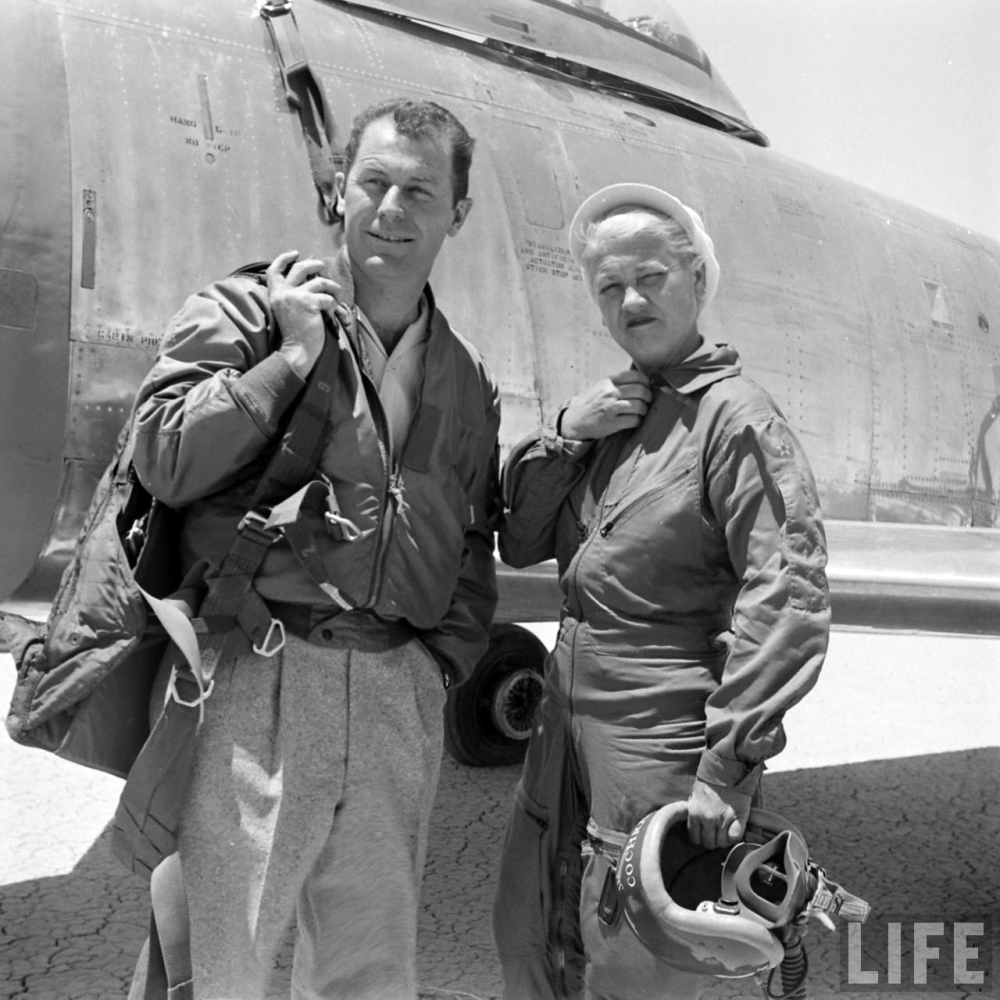
 The Canadair Sabre Mk.3 was a one-of-a-kind CL-13 Sabre (an F-86E Sabre manufactured by Canadair Ltd. under license from North American Aviation, Inc.) built to test the prototype Avro Canada Gas Turbine Division Orenda 3 engine. Modifications to the F-86 airframe were required to install the new, larger engine.
The Canadair Sabre Mk.3 was a one-of-a-kind CL-13 Sabre (an F-86E Sabre manufactured by Canadair Ltd. under license from North American Aviation, Inc.) built to test the prototype Avro Canada Gas Turbine Division Orenda 3 engine. Modifications to the F-86 airframe were required to install the new, larger engine.
The Orenda 3 was an axial-flow turbojet engine with a 10-stage compressor, six combustion chambers and single-stage turbine. It produced 6,000 pounds of thrust (16.69 kilonewtons), a 15% improvement over the General Electric J47-GE-13 installed in the standard F-86E. The Orenda was 121.3 inches (3.081 meters) long, 42 inches (1.067 meters) in diameter and weighed 2,650 pounds (1,202 kilograms).
Canadair Ltd. was an aircraft manufacturer located at Cartierville, Montreal, Canada, owned by the American submarine builder, Electric Boat Company. Canadair also built licensed versions of the Douglas DC-4 (powered by Rolls-Royce Merlin engines) and the Lockheed T-33 two-place jet trainer. In 1954, the company became a part of General Dynamics.
After the speed and altitude records, No. 19200 was sent to North American Aviation for evaluation. Today, it is on static display outdoors at Wetaskiwin Regional General Airport (CEX3), Alberta, Canada.
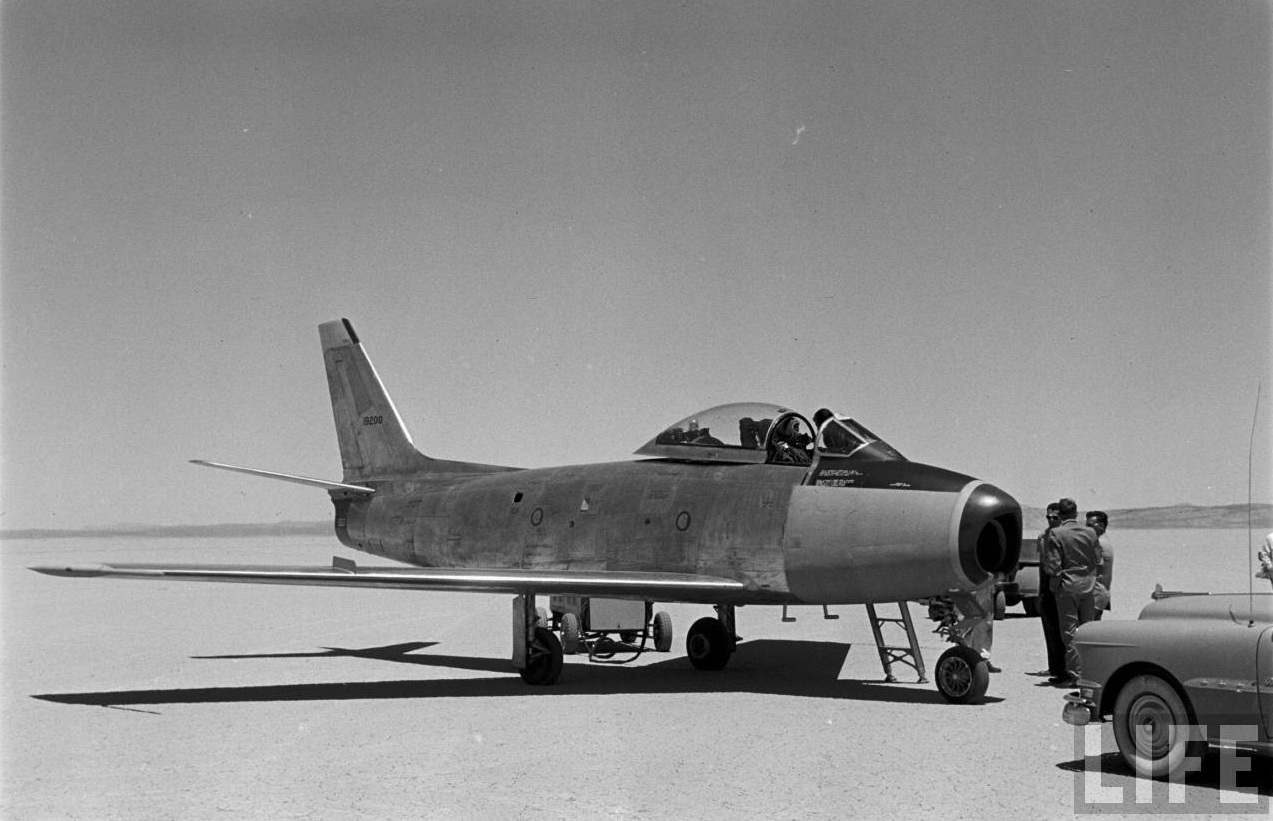
¹ FAI Record File Number 8870
² FAI Record File Numbers 13039, 13040, 9075, 9076 and 12858
© 2019, Bryan R. Swopes
